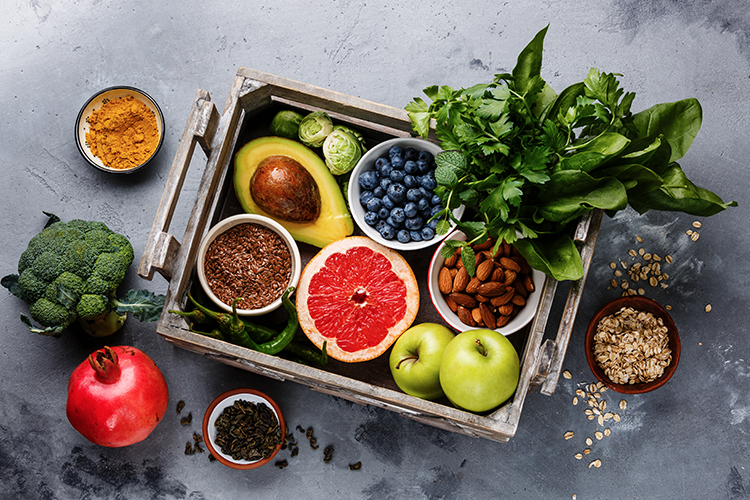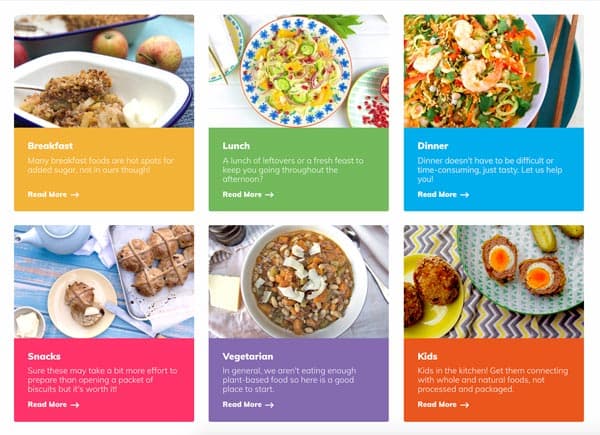Blog
Sugar and skin
Today we are going to keep things skin deep and take a closer look at what too much of the sweet white stuff can do to our largest organ
Our skin— all 1.5-2 metres square of it — has many functions. To name a few, it protects against extreme temperatures, sunlight and chemicals. It manufactures vitamin D and it allows us to touch and feel the outside world.
Peeling back the layers of the skin…
- The epidermis (the outer layer)- constructed mostly of the tough protective protein keratin, it constantly turns over as the exterior cells die and flake off.
- The dermis- contains the proteins collagen and elastin, which provide strength elasticity respectively. These components are responsible for the keeping the skin supple and youthful. The dermis also houses blood vessels to help the body thermoregulate; nerves to help communicate the outside world to the brain; hair follicles and sweat glands.
- The subcutaneous (the innermost layer)- connects the dermis to bone and muscle and includes a layer of fat that can act as a fuel source, insulation and protection.
As mentioned above, collagen and elastin largely hold the key to how our skin appears. While production naturally declines with age there are various lifestyle factors that can also impact its production such as stress, gut health and diet- added sugar intake being a major culprit.
When we eat food that contains added sugar or heavily refined grains, the glucose is rapidly broken down and taken up into the bloodstream. Our body is dependent on insulin to do its job effectively- to eliminate the glucose from the bloodstream and deliver it to cells for energy or store it for later. With ongoing high consumption of added sugar, this activity can become compromised, having many detrimental effects on the body such as inflammation.
Chronic high intake of added sugar and inflammation wreaks havoc on many organs, the skin included…
- Through a process called glycation, sugar molecules form advanced glycation end products (AGEs). AGEs can attach to the collagen and elastin, resulting in wrinkles and inflammation, and can exacerbate other skin conditions like acne and rosacea.
- Glycation can cause the type of collagen produced to change, from the strong type III to the weaker type I, making skin more susceptible to damage, especially from the sun.
- Enzymes which are a product of inflammation can also break down the collagen and elastin fibres.
- Sugar is dehydrating, therefore can contribute to puffy-looking skin and dark circles under the eye.
- The body struggles to metabolize excess sugar. As a result, digestion and our gut flora balance are compromised, this will show on the outside.
The good news is, there are simple and easy food swaps and inclusions that can protect your skin!
- Swap out refined grains and sugars with fibre-rich, low-glycemic carbohydrates and make insulin’s job a little easier.
- Include plenty of healthy fats for supple skin, such as oily fish, nuts, seeds, olive oil and avocado.
- Eat plenty of fresh fruit and vegetables daily- they are rich in antioxidants, phytonutrients and fibre.
- Berries get a special mention because they are super antioxidant powerhouses!
Additional lifestyle factors to work on include:
- Get more zzzs (it’s called beauty sleep a reason).
- Take time out for you, the less stress the better.
- Slap on sunscreen if you’re outside during the hottest part of the day or for a long period.
- Get to love your kitchen and cooking and reap therapeutic, social and beauty benefits of healthy home-prepared meals!
Of course, everyone’s genes and skin are different which will influence how much we glow (or wrinkle), and there is always the increasingly popular quick-fix cosmetic procedures for those who want to “correct” damaged or ageing skin. However, the first line of defence should be protection and you can do a lot of this naturally by minimising added sugars and refined grains, and including plenty of fresh whole foods!
By Jennifer Peters, ANutr
Public Health Nutritionist












